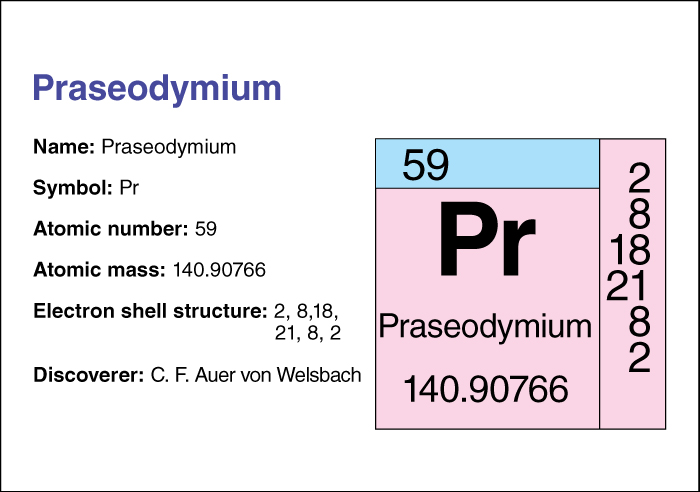Praseodymium, << `pray` zee oh DIHM ee uhm >> (chemical symbol, Pr), is one of the lanthanide elements. Its atomic number (number of protons in its nucleus) is 59. Its relative atomic mass is 140.90765. An element’s relative atomic mass equals its mass (amount of matter) divided by 1/12 of the mass of carbon 12, the most abundant form of carbon. At 25 °C, the density of praseodymium is 6.475 grams per cubic centimeter (see Density ). For information on the position of praseodymium on the periodic table, see the article Periodic table .
The Austrian chemist C. F. Auer von Welsbach first discovered praseodymium in 1885, when he separated salts of the so-called element didymium into praseodymium and neodymium. The name praseodymium comes from the Greek words prasios, meaning leek-green, and didymos, meaning twin. The element received this name because it occurred in the green fraction, or part, of didymium.

Praseodymium melts at 931 °C and boils at 3520 °C. It makes a useful alloy, especially in misch metal (a mixture of lanthanides). Praseodymium oxide is a black powder that dissolves in acid to form green solutions or green salts. These salts are used in the ceramics industry for coloring glass and for glazing.
